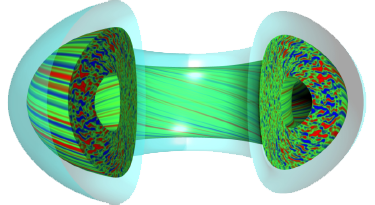Speaker
Description
Despite the rapid development in machine learning based disruption prediction, predicting disruptions across different tokamaks is still a great obstacle to overcome. Furthermore, ITER-like tokamaks can hardly tolerate disruptions at a large scale, which makes it very hard for current data-driven method to obtain an acceptable result. A machine learning method capable of transfering a disruption prediction model trained on one tokamak to another is required to solve the problem. The key is a model containing a feature extractor able to extract common disruption precursor traces in tokamak diagnostic data and a transferable disruption classifier. Currently, most deep learning based disruption prediction methods refer to neural network structure from some state-of-the-art computer vision models. However, the problem is that those networks are designed to extract image features, resulting in strong inductive bias on image data. On the other hand, tokamak diagnosis produce high dimensional heterogeneous time series data, which is very different from images. Based on the concerns above, the paper presents a deep "hybrid" neural network that is designed specifically for extracting disruption precursor features from common diagnosis on tokamaks, providing a promising foundation for transferable models.
The “hybrid” deep neural network feature extractor is designed according to the understanding of currently known precursors of disruption and their representations in common tokamak diagnosis. Both temporal and spatial features are considered. Different network structures are used to handle different features. Thus, strong inductive bias on tokamak diagnosis data is introduced to the model. The paper presents the evolution of the neural network feature extractor and its comparison against general deep neural networks, as well as a physics based feature extraction with a traditional machine learning method. At last, possible use cases in transfer a prediction model of the feature extractor are presented.
| Country or International Organisation | China |
|---|---|
| Affiliation | International Joint Research Laboratory of Magnetic Confinement Fusion and Plasma Physics, Huazhong University of Science and Technology |

